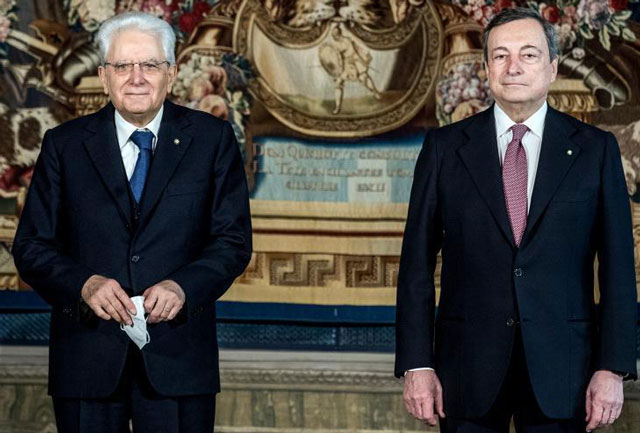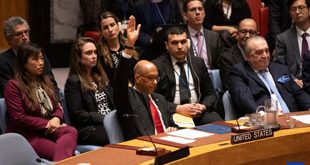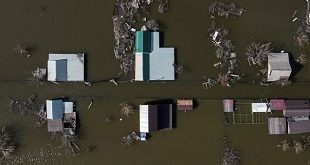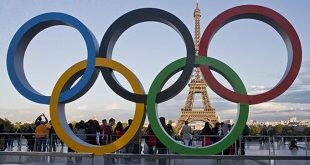
Rome, Italy | XINHUA | Former European Central Bank (ECB) President Mario Draghi formally accepted the task of forming the next Italian government as new Prime Minister on Friday. His 23-member cabinet was sworn in at the Quirinal presidential palace at noon on Saturday.
Draghi took the job after the collapse of the previous government led by Giuseppe Conte, which fell after a junior ally left the coalition.
The new cabinet, made of both technical and political figures, is now formally in charge, although it still has to face the necessary vote of confidence in both houses of the parliament.
In the political talks held before formally accepting the mandate, Draghi has received the support of all parties — from the left to the right of the political spectrum — but one.
PRO-EUROPEAN STANCE
Draghi, 73, was born in 1947 in a wealthy family in Rome, with his father working for the Bank of Italy (central bank). His mother was a pharmacist. The oldest of three children, he lost his parents when he was a teenager.
After graduating in Economics from the Sapienza University in Rome, Draghi received a Ph.D. in Economics from the Massachusetts Institute of Technology (MIT) in the United States in 1976.
He taught in various universities in Italy and worked for the World Bank in the 1980s. He was then appointed Director-General of the Italian Treasury from 1991 to 2001.
In this role, his efforts to reduce Italy’s huge public debt — thus stabilizing interest rates and currency exchange rates — proved crucial for making the Italian economy ready to enter the European monetary union in 1999.
After working with private banking and investment company Goldman Sachs in the early 2000s, Draghi was Governor of the Bank of Italy from January 2006 to October 2011.
Again, he adopted a strict monetary policy to help the country keep pace with the challenges and changes attached to the euro currency project.
In November 2011 — at the heights of the European sovereign debt crisis — he became president of the European Central Bank. He kept this role until Oct. 31, 2019, when Christine Lagarde succeeded him.
HELPING SAVE EURO CURRENCY
Beyond his long career as an economist and banker, Mario Draghi would likely be remembered for a specific phrase that summarized his efforts as ECB chief.
“When people talk about the fragility of the euro… they underestimate the amount of political capital that is being invested in the euro,” he said in a famous speech in July 2012.
“We think the euro is irreversible… Within our mandate, the ECB is ready to do whatever it takes to preserve the euro. And, believe me, it will be enough.”
The resolution behind his words, and the ECB’s actions that followed, helped the bloc exit the debt crisis, and actually saved the euro currency, making Draghi a highly acknowledged figure at the global level, and at home.
On March 25 2020, with the COVID-19 pandemic raging across the world, Draghi wrote an op-ed on the Financial Times daily about the economic impact of COVID-19 and what was needed to recover, showing again a clear stance in the European perspective.
“The challenge we face is how to act with sufficient strength and speed to prevent the recession from morphing into a prolonged depression,” he wrote.
“Much higher public debt levels will become a permanent feature of our economies…It is the proper role of the state to deploy its balance sheet to protect citizens and the economy against shocks that the private sector is not responsible for and cannot absorb.”
*****
XINHUA
 The Independent Uganda: You get the Truth we Pay the Price
The Independent Uganda: You get the Truth we Pay the Price


